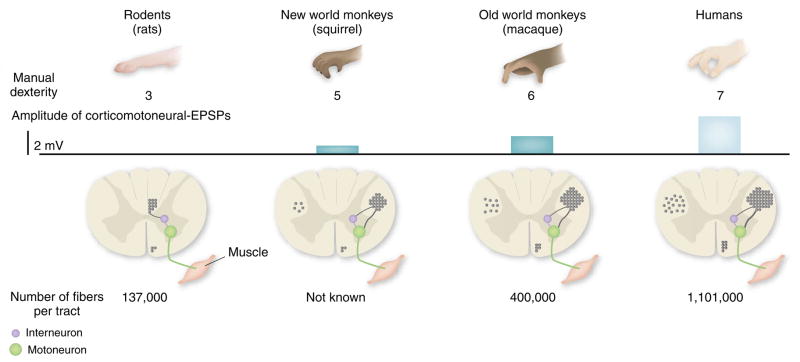Figure 1.
Relationship between the development of the corticospinal tract and the emergence of fine motor control abilities. In rodents, there are no direct connections between corticospinal neurons and the cervical motoneurons that innervate forelimb muscles—interneurons relay cortical input to motor neurons. In the evolution of the corticospinal tract in nonhuman primates and humans, direct corticospinal connections with motoneurons have emerged, together with an increase in the size and number of the corticospinal fibers. Accordingly, the size of the excitatory postsynaptic potential (EPSP) elicited by cortical neurons on motoneurons has increased during primate evolution. Furthermore, most of the corticospinal tract fibers in rodents travel in the dorsal columns. In contrast, the primate corticospinal tract is mostly located in the lateral columns, and a significant proportion of corticospinal fibers (10–20%) descend ipsilaterally. Development of the corticospinal tract correlates with the improvement in the index of dexterity (as quantified in ref. 30), particularly in the ability to perform finger-thumb precision grip. Figure adapted from ref. 31.

